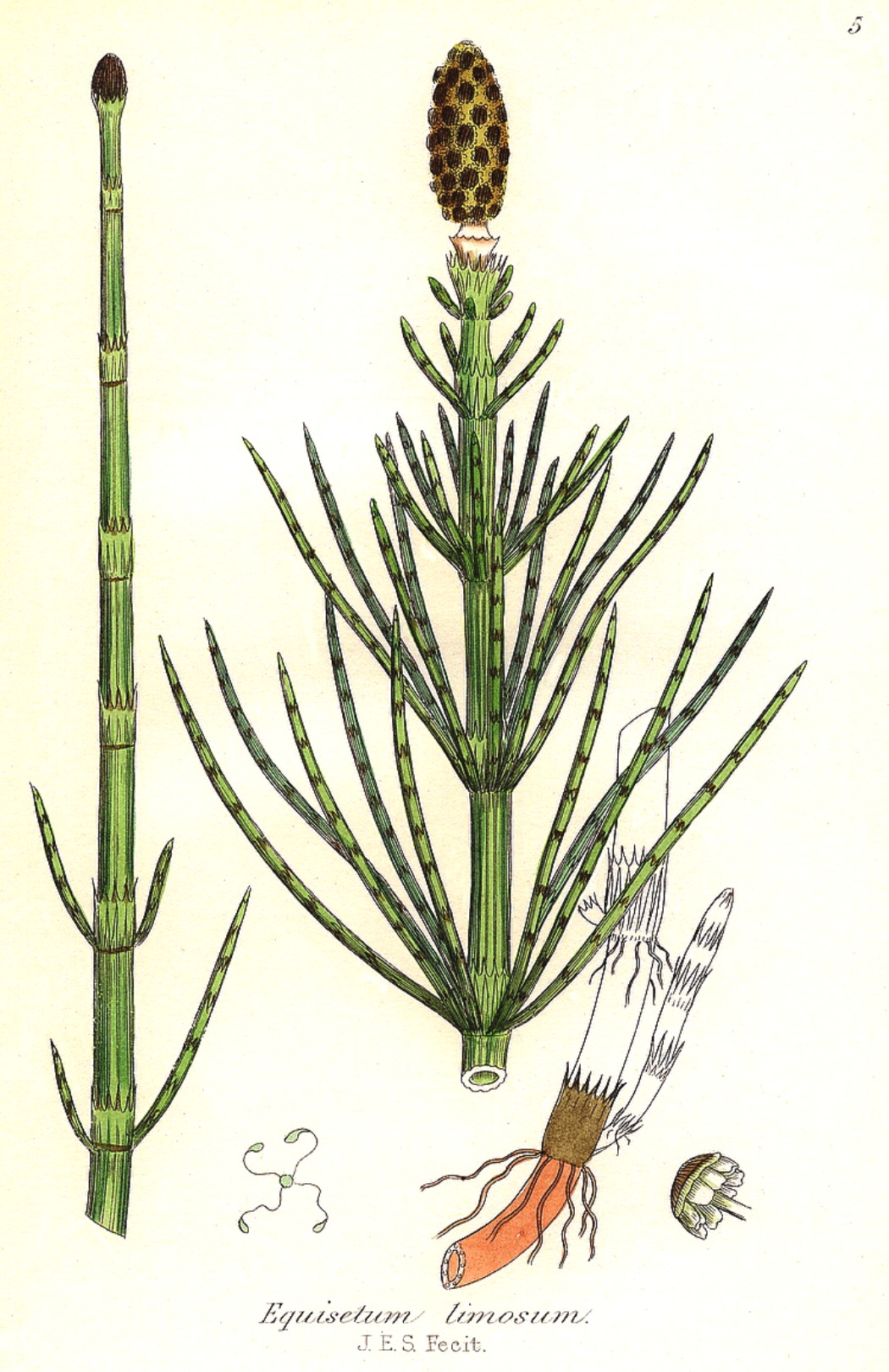Equisetum fluviatile
Equisetum fluviatile
The Water horsetail (Equisetum fluviatile L.) is an aquatic fern belonging to the Equisetaceae family.
Systematics –
From a systematic point of view it belongs to:
Eukaryota Domain,
Kingdom Plantae,
Pteridophyta division,
Polypodiopsida class,
Subclass Equisetidae,
Order Equisetales,
Family Equisetaceae,
Genus Equisetum,
Species E. fluviatile.
The terms are synonymous:
– Equisetum heliocharis Ehrh .;
– Equisetum limosum L ..
Etymology –
The term Equisetum comes from the genitive of equus horse and from sétum bristle, horsehair: reminiscent of the hair of the horse tail.
The specific fluviatile epithet comes from fluvius river, watercourse: of rivers or streams.
Geographic Distribution and Habitat –
The Water horsetail is a fern from the arctic and temperate regions of Europe, including Great Britain, North America, and Asia, with a vast circumboreal distribution.
In Italy it is present in almost all regions with the exception of the islands and Puglia and Basilicata, where the few known reports are considered erroneous.
Its habitat is that of stagnant waters, along the springs, the edges of the ditches, from sea level to about 1800 m.
Description –
Water horsetail is a herbaceous, perennial and rhizomatous plant, which grows up to 100 cm in height.
The stem is cord, with nodes from which thin branches branch off, with leaf sheaths up to one centimeter long. This species has the largest central cavity among equisets, with 80% of the diameter of the typically hollow stem.
This plant reproduces both sexually, through spores, and preferentially vegetatively, through rhizomes.
Fertile stems, which carry the sporangia inside which spores are produced, usually appear in the period between May and August. These end with brown strobili, obtuse at the apex, of about 3 cm and appear before the sterile stems that carry only verticillated branches with photosynthetic function.
Cultivation –
The Water horsetail is a plant that grows spontaneously, though increasingly rarely; it does not fear frost and withstands winter temperatures to -35 ° C (-35 ° C).
It prefers a moist soil with a pH between 6.5 and 7.5 and has a deep and penetrating root system which, in some cases, can be invasive.
When grown in the garden, they are best preserved by planting it in a large container sunk into the ground.
It reproduces both by spores that are best collected as soon as they are ripe in spring and immediately sow on the surface on a sterile compost. In this case, the soil must be kept moist and then transplanted into pots as soon as the plants are large enough to be handled. In any case, if the plants are positioned in a suitable place, they spread very freely, even by rhizome, and do not need any assistance.
This plant is an excellent ground cover for a pond, where it can live up to 20 cm deep, in a sunny or partial shade.
Customs and Traditions –
At one time, the stems of Equisetum fluviatile, which are heavily silicated, were used as an abrasive to clean wood and copper.
This plant can have an edible use, used as a substitute for asparagus, although it is neither palatable nor nutritious, even if the roots contain a nutritious starch. Among other things, caution is advised because large quantities of the plant can be toxic. This is because it contains the enzyme thiaminase, a substance that can deprive the body of the vitamin B complex. In small amounts this enzyme will not harm people on an adequate diet rich in vitamin B, although large amounts can cause serious health problems. . The enzyme is destroyed by heat or complete drying, so cooking the plant will remove the thiaminase. The plant also contains equisetic acid.
Horsetails have an unusual chemistry compared to most other plants. They are rich in silica, contain various alkaloids (including nicotine) and various minerals. The plant is hemostatic.
It is advisable not to harvest Equisetum fluviatile as this plant is on the IUCN red list of threatened plants.
Preparation Mode –
Sterile stems are used of the Water horsetail, they are more active when fresh but can also be dried and sometimes the ashes of the plant are used. These should be collected in the spring (with the above recommendations).
An externally applied decoction is hemostatic and will stop wound bleeding and accelerate healing.
Guido Bissanti
Sources
– Acta Plantarum – Flora of the Italian Regions.
– Wikipedia, the free encyclopedia.
– Useful Tropical Plants Database.
– Conti F., Abbate G., Alessandrini A., Blasi C. (ed.), 2005. An annotated checklist of the Italian vascular flora, Palombi Editore.
– Pignatti S., 1982. Flora d’Italia, Edagricole, Bologna.
– Treben M., 2000. Health from the Lord’s Pharmacy, Advice and Experiences with Medicinal Herbs, Ennsthaler Editore.
Caution: Pharmaceutical applications and alimurgical uses are indicated for informational purposes only, they do not represent in any way a medical prescription; it therefore declines all responsibility for their use for curative, aesthetic or food purposes.


